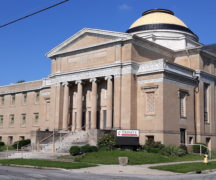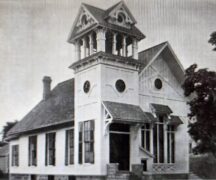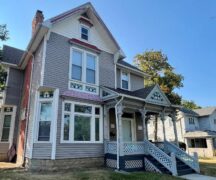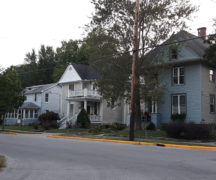The site of a former opera house and theater in downtown Bowling Green has been named the city’s Historic Building of the Month for January by the city’s Historic Preservation Commission.
Many may not be aware that there was an opera house, first named the Hankey-Taber Opera House (also called the BG Opera House), that once stood at the site of 165 S. Main St. (McKenzie’s Flower Basket) and 169 S. Main St. (BG Graphics Company) and the adjacent parking lot.
The BG Opera House was built in 1889 by Ira C. Taber and John R. Hankey, a prominent Bowling Green businessman who built several buildings here during the gas boom and who was founder of the BG Natural Gas Company and Board of Improvement.
It was built after the originally developed block, nicknamed the “Opera House Block”, was destroyed by a fire in 1888. The building was built by notable Bowling Green brick contractor Morris Walker, who was also responsible for many of the town’s early brick banks, churches, and business blocks starting in the late 1860s.
It was said the opera house job was finished in about a month, with a group of about 16 to 18 laborers. The building was 90 feet by 120 feet, and 59 feet tall, with a 28 foot main ceiling and the floor sloping toward the stage like other big city opera houses of the day.
The facility was noted to seat about 1,500 with “automatic opera chairs.” According to the book “The First One Hundred Years of Bowling Green, Ohio” by Charles Sumner Van Tassel, there were 400 attendees on opening night “present in all their starch and feathers, with Robert Downing in one of Shakespeare’s plays.”
Van Tassel also noted the opera house was a popular place for “holding political conventions and other gatherings, as well as for amusements.” Van Tassel emphasized one of the most famous plays performed there was by actress Blanche Bates.
He wrote, “her company put on the play that was the talk of all the big cities, ‘The Girl of the Golden West,’ to a house of top prices, in which there wasn’t standing room left.” This play opened in New York, toured for many years in several U.S. cities, and was made into four films.
It was major news for Bates to bring the play to a town the size of Bowling Green. It was noted that even the mayor of Toledo and editors of the Toledo Blade attended. In 1892, the remainder of the block was completed north of the opera house, where one building remains (where Beckett’s Burger Bar is).
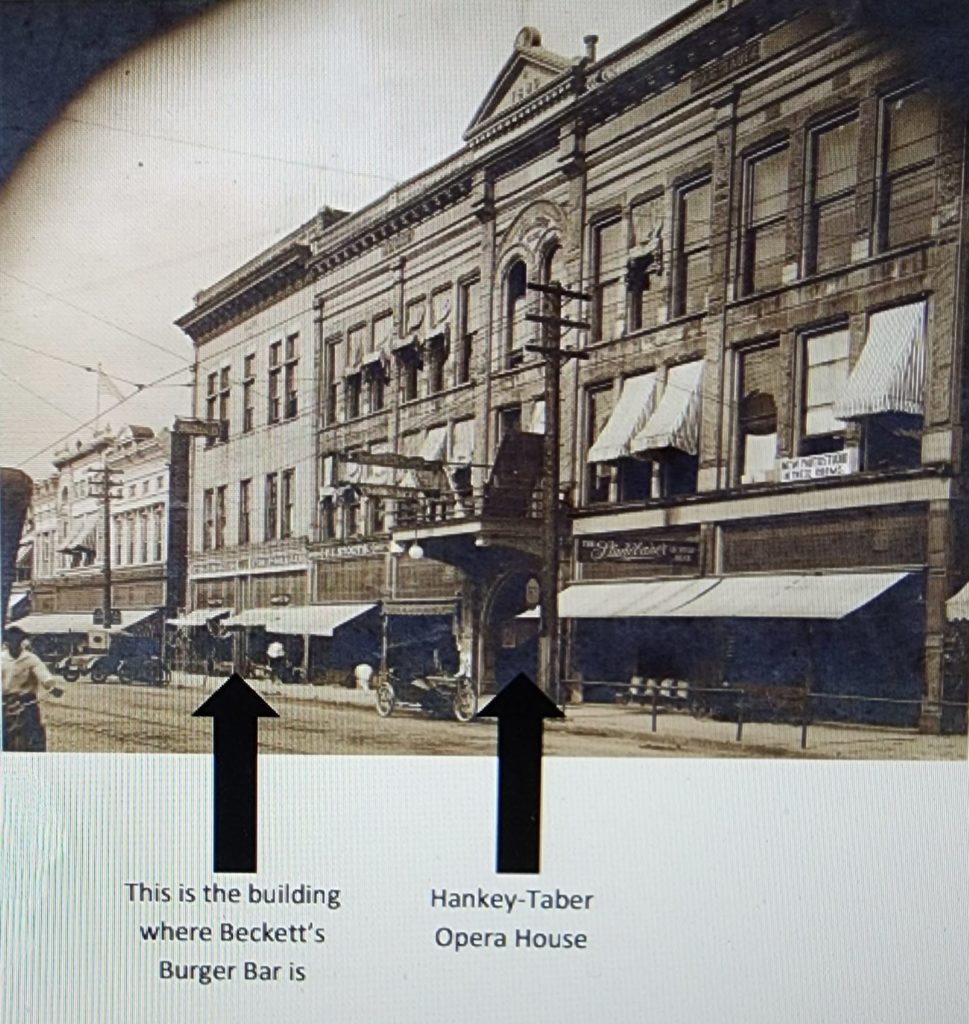
In 1903 the theater was purchased by Murray Chidester (who lived at the home at 707 W. Wooster St., highlighted as the Historic Building of the Month in November) and it was renamed “The Chidester Theatre.”
Chidester remodeled the opera house extensively, using architect David L. Stine to design the new theater. Stine is known for the Edward D. Libby House (1895) and several other homes in the Old West End in Toledo, along with designing the Lucas County Courthouse and Jail (1897).
The “new” theater, four-stories with two balconies on the upper floors, had all the modern conveniences of electric lights, boiler heat and public restrooms. The floor level seated up to 320 people and also had eight private boxes, upper and lower, on each north and south wall, each containing “six beautiful reed chairs, imported from the Philippines.”
The balcony off the foyer was called the Family Circle and contained 219 chairs. Above that was the true balcony which seated another 190 people. Seven miles of wire, 1,000 lights and 100 switches, 250 feet of brass railing and 400 yards of carpet are quoted in the Wood County Sentinel, in a front-page story heralding its grand opening.
Opening night was “Crisis” starring Isabel Irving. The remodeled theater had the reputation among theatrical road shows and booking houses as one of the most beautiful small theaters in the country.
The theater was sold in 1918, renamed the Del-Mar and movies were shown for about two years until Clark Young took over in 1920 (owner of the Cla-Zel at that time). The Del-Mar burned down on Sept. 29, 1926, which was six months after the opening of the Cla-Zel. According to an article in The Sentinel Tribune, fire departments from Perrysburg, Washington Township, Tontogany and Toledo helped to extinguish the fire.
For over 35 years, the theater served as a meeting place for the community where history was made – whether it be graduations, plays, events, meetings or movies.
—————–
Would you like to nominate a historic building or site for recognition? You can do this through the City website at – https://www.bgohio.org/FormCenter/Planning-13/Historic-BuildingSite-Nomination-Form-83
You can learn more about the Historic Preservation Commission by attending their meetings (the 4th Tuesday of each month at 4:00 p.m.) or by visiting their webpage at https://www.bgohio.org/436/Historic-Preservation-Commission.


